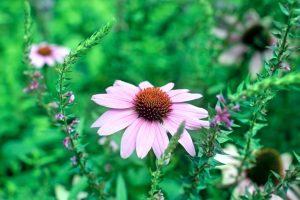A garden with wild flowers has the advantage of resistant plants that grow easily, with minimal care. Wild flowers can grow even in poor soils, being a cheap alternative for any gardener.
Preparing your garden in the Northeast Region for planting wild flowers
Once you have chosen the area of your property that you want to transform in a beautiful garden, you have to deal with the biggest enemy of wildflowers: the weeds. Manual weed removal is the best solution for a smaller area, but if you want to have a larger garden, you may need to use herbicides.
After removing the unwanted vegetation from the chosen area, clean it well with a rake, without leveling the ground perfectly. The best time to plant wild flowers is spring, but the soil must be prepared since the fall.
Choosing the best wildflowers to use in the Northeast Region
The specialists’ recommendations include opting for native species, which grow naturally in the Northeast Region. Naturalization of some foreign species is complicated and does not always succeed. The climate in the area is very important too. The Northeast Region is a region of great diversity in climate, geography and biological diversity. It is characterized by four distinct seasons. Climate is colder away from the coast, in the north, at high elevations, but considering the global warming, the intensity and frequency of heat waves are expected to increase. Statistics also show that the amount of precipitation as well as the frequency of extreme precipitation events is on the rise in the region, especially in spring and winter and in northern. This could lead to more frequent drought conditions in summer.

Best wildflowers to use in the Northeast Region
There are many wildflowers that thrive when planted in the Northeast Region, both annual and perennial. Wildflowers are easy to grow and will bring a medley of blooms to your garden throughout the year and for many years to come. Some of these species appear in the first year after planting them, while perennial varieties start in the second season.
Here is a list of wildflower species – some will be found in a perennial wildflower mix – to choose from when you plan your garden in the Northeast Region.
- Calendula (Calendula officinalis)
- Cornflower / Bachelor Button (Centaurea cyanus)
- Siberian Wallflower (Cheiranthus allionii)
- Sulphur Cosmos (Cosmos sulphureus)
- Wild Cosmos (Cosmos bipinnatus)
- Purple Coneflower (Echinacea purpurea)
- Baby’s Breath (Gypsophila elegans)
- Candytuft (Iberis umbellata)
- Scarlet Flax (Linum grandiflorum rubrum)
- Love In A Mist (Nigella damascena)
- Yellow Prairie Coneflower (Ratibida columnari)
- Catchfly (Silene armeria)
Planting wild flowers
Because many wild flower seeds are very small, you can mix sand with them to make sure you spread them evenly in the garden. After spreading the seeds, wet the whole area and make sure the soil stays humid until the plants grow about 10 cm. A layer of compost can help keep the seeds moist during germination and protects them from birds. Some of the first buds should appear 5-6 weeks after planting and your garden will start blooming.



